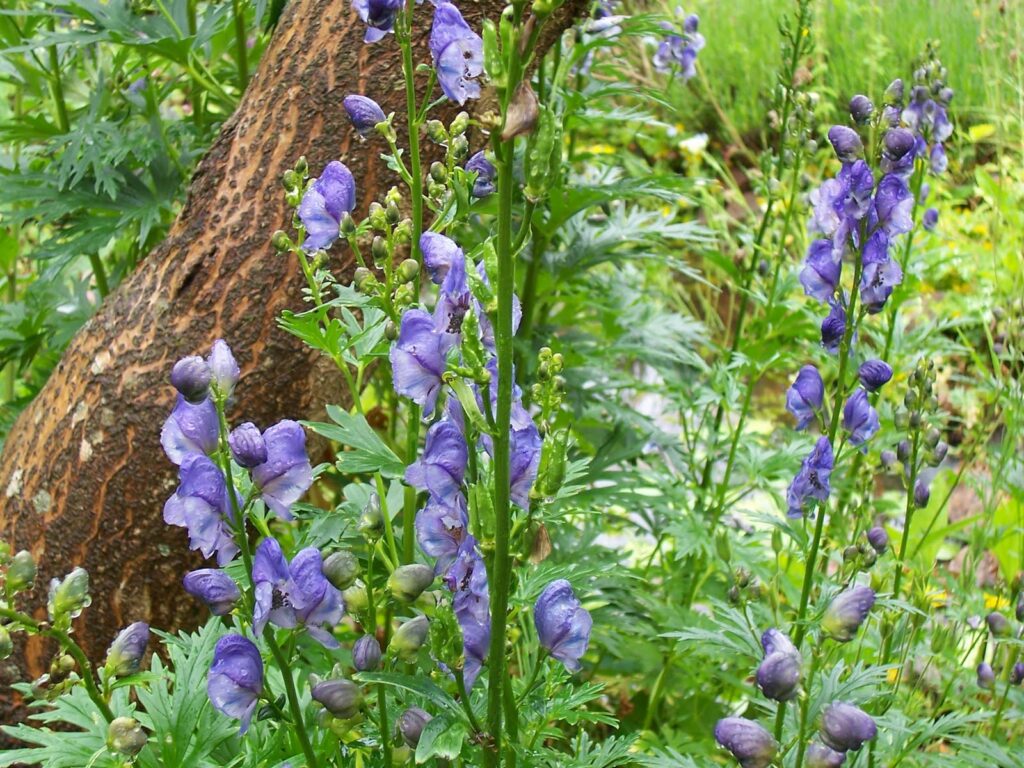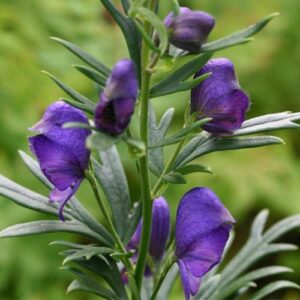Herb
Ativisa (Aconitum heterophyllum) Herb Ayurvedic Overview
Ativisa (Aconitum heterophyllum) is an important Ayurvedic herb used for many years for multiple health conditions. It is a tall herb that consists of dried, tuberous roots of Aconitum heterophyllum Wall. Ex. Royle (Fam, Ranunculaceae). It is native of the western Himalayas and found in Garhwal, Kumaon, and Kashmir at an altitude between 2,500-4,000 m.
The flowers are approx 2.5-3 cm, usually in lax, spike-like clusters with very variable bracts which are either small linear, small ovate. The leaves are heart-shaped to rounded, it is of 4-8 cm, and the upper ones stem-clasping with large rounded teeth. The roots of Ativisa (Aconitum heterophyllum) are astringent and used in diarrhea, especially in infants, in dyspepsia, vomiting, cough, irritability of the stomach and colic. It is rich in expectorant, febrifuge, anthelmintic, analgesic, antipyretic, anti-periodic, aphrodisiac, anti-diarrheal, anti-emetic, and anti inflammatory properties.
Table of Contents
Scientific Classification of Ativisa (Aconitum heterophyllum):
- Kingdom: Plantae (comprising all living or extinct plants)
- Subkingdom: Tracheobionta (have lignified tissues or xylem for conducting water and minerals)
- Superdivision: Spermatophyta (produce seeds)
- Division: Magnoliophyta (flowering plants)
- Class: Magnoliopsida (flowering plant producing an embryo with paired cotyledons)
- Subclass: Magnoliidae
- Order: Ranunculales
- Family: Ranunculaceae – Buttercup family
- Genus: Aconitum
- Species: Aconitum heterophyllum
Ativisa (Aconitum heterophyllum) Synonyms:
- Sanskrit: Aruna, Ghunapriya, Visa
- Assamese: Aatich
- Bengali: Ataicha
- English: Atis Root
- Gujrati: Ativishni Kali, Ativikhani Kali
- Hindi: Atis
- Kannada: Ativisha, Athihage
- Malayalam: Atividayam, Ativitayam
- Marathi: Ativisha
- Oriya: Atushi
- Punjabi: Atisa, Atees
- Tamil: Atividayam
- Telugu: Ativasa
- Urdu: Atees
Ativisa (Aconitum heterophyllum) Description:
a) Macroscopic: The Roots of Ativisa (Aconitum heterophyllum) are ovoid and conical, tapering 2.0-7.5 cm long, 0.4-1.6 cm or thicker at its upper extremity, and gradually decreasing in thickness towards the tapering end.
From externally, it is light ash-grey, while internally, it is starch white. The external surface is wrinkled, marked with scars of fallen rootlet, and a rosette of scaly rudimentary leaves on top.
b) Microscopic: The transverse section of the mature root shows a single-layered epidermis which consists of light brown tabular cells rupturing on the formation of cork. The cork consists of 5-10 rows of thin-walled cells, tangentially elongated. The cortex is much wider and consists of tangentially elongated or rounded, thin-walled parenchymatous cells with intercellular spaces.
The cells are fully packed with simple as well as compound starch grains, which are composed of 2-4 components of a spherical body. The endodermis distinct is composed of barrel-shaped cells, vascular bundles arranged in a ring, inter-fascicular cambium present in the form of a circle consisting of few-layered thin-walled cells. The central core consists of thin-walled parenchymatous cells, possessing starch grains similar to those found in cortical cells.
Powder: Ash colored to light brown, and under a microscope, it shows abundant compound and straight starch grains and parenchymatous cells.
Identity, Purity, and Strength of Ativisa (Aconitum heterophyllum):
- Foreign matter Not more than 2 percent, Appendix 2.2.2.
- Total Ash Not more than 4 percent, Appendix 2.2.3.
- Acid-insoluble ash Not more than 1 percent, Appendix 2.2.4.
- Alcohol-soluble extractive Not less than 6 per cent, Appendix 2.2.6.
- Water-soluble extractive Not less than 24 percent, Appendix 2.2.7
Chemical Constituents of Ativisa (Aconitum heterophyllum):
The roots of Aconitum heterophyllum contains Atisine, F- dihydroatisine, hetisine, heteratisine, heterophyllisine, heterophylline, heterophyllidine, hetidine, hetisinone, and atisenol.
Ayurvedic Properties and Action of Ativisa (Aconitum heterophyllum):
- Rasa: Katu, Tikta
- Guna: Laghu, Ruksha
- Virya: Ushna
- Vipaka: Katu
- Karma: Deepan, Pachan, Kaphapittahara, Samgrahika, Jwarahara, Aam Atisara, Grahi, Raktashodak, Shoth hara, Kasa hara, Visha hara.
Ayurvedic Formulations made by Ativisa (Aconitum heterophyllum):
The essential formulations of Ativisa are Rodhrasava, Shiva Gutika, Lakshmi Narayana Rasa, Maha Vishagarbha Taila, Sudarshan Churan, Panchatikta ghrita guggul, Balachaturbhadrika Churan.
Therapeutic Uses of Ativisa (Aconitum heterophyllum):
The main indications of Ativisa (Aconitum heterophyllum) are Jwara, Kasa, Chardi, Karimiroga, Amatisara, Pratishaya, Shoth, Arsha, Udara, Krimi, Arsha, Mushika visha, Stanyavyapat, Ajeeran, Agnimandaya.
Dose of Ativisa (Aconitum heterophyllum):
1-3 gm of the drug in powder form.
Reference:
Ayurvedic Pharmacopeia of India.



